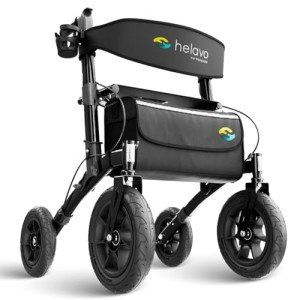Understanding Mobility Assistance: A Comprehensive Guide
In an increasingly active world, mobility assistance has ended up being essential for numerous people. Whether due to age, injury, or persistent illness, mobility challenges can considerably affect everyday life. This article looks into the various types of mobility assistance, their advantages, and useful considerations for those looking for assistance.
What is Mobility Assistance?
Mobility assistance includes a series of services, gadgets, and modifications developed to assist people move securely and effectively. It intends to boost self-reliance for those with problems in movement, enabling them to perform day-to-day activities and communicate with their environments.
Kinds Of Mobility Assistance Devices
Mobility assistance devices can differ extensively, from basic to complex help. The following table outlines some typical types of mobility assistance devices, their descriptions, and suitable usages:
| Type of Device | Description | Suitable For |
|---|---|---|
| Wheelchairs | Wheeled mobility devices for people with restricted walking capability. | Irreversible or momentary mobility requirements. |
| Walkers | Frames with four legs, providing support while walking. | People requiring a stable aid. |
| Walking canes | Lightweight sticks offering support; consists of standard and quad canes. | Those with mild mobility problems. |
| Crutches | Gadgets developed to move weight off the legs. | Post-surgery recovery or injuries. |
| Mobility Scooters | Motorized lorries supplying transport over short distances. | Those with mobility impairments. |
| Stairlifts | Motorized chairs that go up and down stairs. | Multilevel homes with stair availability problems. |
| Home Modifications | Structural modifications, such as ramps or larger entrances. | Enhancing home ease of access for wheelchairs or walkers. |
| Transfer Aids | Gadgets like sliding boards or lift systems for easier transfers. | Assistance in moving to and from chairs or beds. |
Advantages of Mobility Assistance
The importance of mobility assistance extends beyond physical motion. Here are several crucial advantages:
- Enhanced Independence: Mobility gadgets empower users to perform daily tasks individually, cultivating self-sufficiency.
- Improved Quality of Life: By enabling greater participation in social activities, mobility assistance adds to emotional wellness and social combination.
- Security and Support: Devices like walkers and canes provide physical support, lowering the risk of falls and injuries.
- Access to Healthcare: Mobility assistance can simplify transport to medical consultations, making sure users get necessary care.
- Modification Options: Many mobility gadgets can be customized to fit individual needs and preferences, guaranteeing convenience and performance.
Common Mobility Assistance Challenges
While mobility assistance can pave the way for higher self-reliance and improved lifestyle, various challenges might occur. A few of the common concerns include:
- Cost: Mobility devices can be expensive, and insurance coverage might differ significantly.
- Training and Familiarization: Learning to utilize new gadgets correctly might need time and assistance.
- Availability Issues: Not all environments are geared up to accommodate mobility gadgets, causing possible barriers.
- Stigma: Social stigma around using mobility help can affect self-confidence for some individuals.
Supplying and Receiving Mobility Assistance
To make sure the most reliable assistance, it is necessary for both providers and recipients of mobility aid to think about a number of aspects:
- Assessment of Needs: A thorough assessment by a healthcare specialist can identify the particular type of assistance needed.
- Trial Period: Trying out gadgets can help people discover the one most suited to their lifestyle and preferences.
- Regular Maintenance: Maintenance of mobility gadgets makes sure durability and safety.
- Education: Providing training on the proper usage of mobility aids is necessary for taking full advantage of benefits.
Mobility Assistance FAQs
Q1: What kinds of mobility aids are available?A: Common mobility help include wheelchairs, walkers, walking sticks, crutches, and scooters, among others. Each gadget is created to satisfy particular requirements and choices.
Q2: Where can I acquire mobility assistance gadgets?A: Mobility devices can be obtained from medical supply stores, online retailers, or through doctor recommendations.
Q3: Will my insurance coverage cover mobility assistance gadgets?A: Many insurance plans provide partial protection for mobility help, but coverage can differ based upon the policy. It's advisable to consult the insurance provider for specific information.
Q4: How can I adapt my home for mobility assistance?A: Home modifications like ramp installation, larger doorframes, and get bars in bathrooms can significantly improve ease of access. Consulting with an occupational therapist can supply customized options.
Q5: How do I pick the best mobility aid for me or a liked one?A: Assess the individual's mobility requirements, weight capability, and lifestyle. Experimenting with various devices can likewise help in picking the one that feels most comfortable and practical.
Mobility assistance plays a vital function in boosting the independence, security, and lifestyle for people facing mobility difficulties. From mymobilityscooters.uk walking canes to complex mobility scooters and home modifications, a variety of choices exist to fulfill distinct requirements. As society continues to recognize the value of availability, the integration of mobility assistance services into every day life will enhance, making sure that everybody has the opportunity to lead a satisfying and active lifestyle.
By understanding the readily available choices and advantages, individuals and their households can make informed decisions that support their mobility needs.

